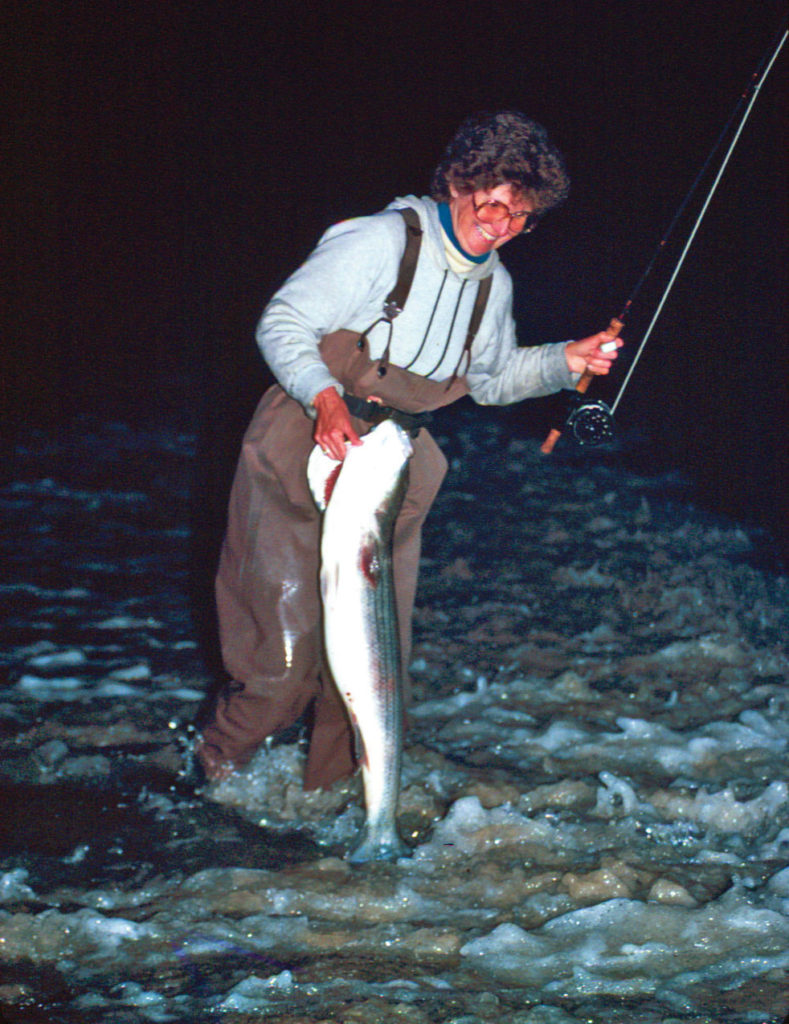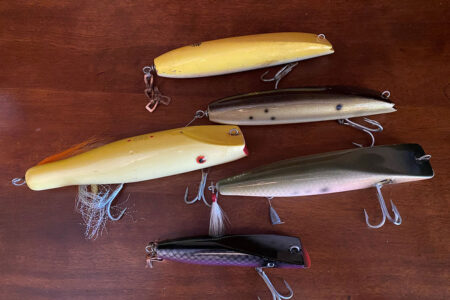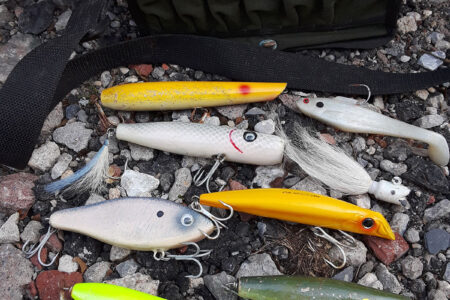
Change is what triggers any uptick in striper fishing.
Sharpies who know the water they fish learn quickly that there are key times when you must be sure to be fishing. Most fishing starts out with slow activity. Because of the rhythm of changing tides, sea fishing rarely stays the same. Predators are constantly roaming for feeding opportunities, looking for moving water where the tidal movements will carry what they need. For that reason, look for moving water. Either you find current or wait for it, watch for it, or know how to look for it. Such tidal activity is the key to good fishing.
Know the Spots
One thing I learned as a small boy fishing with my father was to look more closely at what you learned and less at what you caught. A good mess of fish is one thing, but ideas or facts about a hot spot are some things you can use for the rest of your life. When you happen to find the secrets of a place you fish you probably won’t forget them. Still, I have graying old log books with underlined passages that I feared I could miss at the time. Entries like, “early incoming is hot,” or “don’t miss low water” are all over the entries. If you happened to get hold of those logs, I would have to kill you.
One good hit of fish is something that you are not likely to forget. Nevertheless, if a pattern of repeatability emerges I begin to watch the spot and go there to check it out every chance I get. It doesn’t always work because sometimes catching a few, even total failure, is just an anomaly of chance. Even so, I know to watch for that. It’s also important to log any recordable conditions like wind direction, tide, season, even social things like robust boat launching nearby or weekend crowds. Sometimes your secrets are not so secret. After all, I hope you are smart enough to know the Rhode Island breachways are going to be crowded on Friday nights. (dah)
Outflows
The best success I have ever experienced in 60 years of striper fishing has largely, but not always, been outflows that draw fish from nearby waters. The bigger the outflow, the greater the current, the more influence this moving water exerts upon the locality. Stripers love moving water so you can bet they will be there. That said, it’s not that simple.
There are a lot of elements that play into it. For instance, you can work your way through a rotation with everybody feeding a spool full of line to the current, and the feeding linesides will be way out far enough that no one is reaching them. However, as the tide slows fish have to move in to keep the moving water in their faces. I can’t believe some people don’t know that. Stripers stay with the situation, and their movements are governed by opportunity. Outflows provide the highest level of change and inspire more gamefish movement.
Slack
Repositioning happens in concert with tide variation, but the biggest striper musical chairs goes off when they cannot find their precious current; they need that. Back when we were commercial fishing on Cape Cod we used to pace on the beach waiting for the tide to slack on Race Point, because the stripers would roam all over the foreshore after having ambushed their dinners in the wild monster Race, which hosted all the waters either feeding or dumping from Cape Cod Bay. It was a short but highly reliable blitz. Gosh, did we love that. Said differently, changes in water activity cause changes in where the fish are, and you get to put your bait or lure in front of new fish. If you are intimate with a hot spot, you know exactly when the striper bomb is going off. I can’t wait to tell you this.

One time at Chatham Inlet years ago, we had an inlet before storm induced beach erosion screwed it up. There had been a blitz the night before and word was out about it, drawing enough surfcasters for a Red Sox game. We laughed over the idea that all these interlopers who had not done their homework had come to an empty sea. My demented sense of justice has nothing but contempt for anglers who find fish through the rumor mill. Thirty buggies, their occupants all smoking and sagging into their beer cans, were there. Nobody was fishing because it was dead. Looking at my watch, seeing that the high tide had passed two hours before, I told my wife that with impending slack what few bass, if any, were around would be repositioning themselves. As a result, we should get out there looking as bored and casual as possible. She went first but before I could even join her she was onto a fish. In a flash, her hook-up was noticed and guys were casting over her head right where her fish was blowing up the inlet. It turned out to be one of the biggest bass she ever caught.
Water Volume
I believe low tide has an edge. If you think of an inlet as a container, water around a narrow outflow is shallower, and currents are restricted to a small stream where six hours before the full high tide had three times or more the water for the same number of fish. The idea is to have them see what you are tossing. Said differently from what I previously already covered, currents are subsiding for the impending low tide and whatever was out there that you couldn’t reach earlier is now panting for something to take right under your rod tip. It has gotten easier, and the opening has had more time to draw gamefish.
Even with reduced flow, gamefish will hold and wait on the bottom of the ditch the moving water has created. I don’t like fishing the top unless the water is 2 feet or less deep and can still hold fish. The safe thing is to always fish deep where the fish are where you can scratch their noses. I also like to fly fish these spots, but that is another story.



